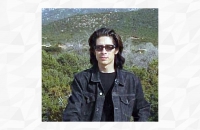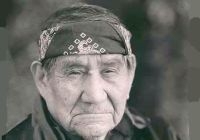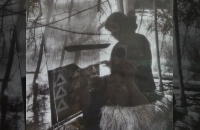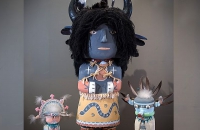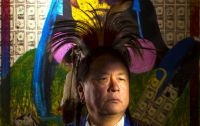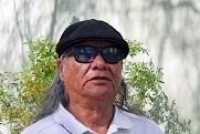Navajo Basketry
The origins of Navajo ceremonial basketry reach back to the deepest parts of Navajo history. Navajo basket weaving is currently in a renaissance, with a range of designs never before seen.
Navajo baskets possess a rich history, indicative of the Navajo people’s movement into the vast Southwest and their subsequent adoption of a lifestyle which would best help them survive in the high red rock desert of the American Southwest. Interestingly, Navajo baskets today descend from basket-making techniques adopted from Ancestral Puebloan people. As is true with other Navajo art forms perfected by rug weavers and silversmiths, Navajo basket artists have mastered techniques necessary to create fine baskets with a uniquely Navajo flavor.
All Navajo baskets employ the coil method of weaving using rhus trilobata, more commonly known as three-leaf sumac. The foundation for all designs is the Navajo ceremonial basket which continues to be woven and used in traditional Navajo healing rites. In the late 1960’s, a few Navajo basket weavers experimented with other pictorial elements such as yei’s and eagles. As a result of this early experimentation, Navajo basket artistry is currently experiencing its richest period of innovation. Led by innovator and weaving teacher, Mary Holiday Black, the work of younger fine basket technicians and artisans such as Elsie Holiday, Lorraine Black, Alicia Nelson and Joann Johnson have exploded into a plethora of representational and geometric designs, making Navajo basketry one of the most exciting movements in contemporary Native American art.
The Navajo used baskets for a wide variety of everyday functions such as storing food, as well as ceremonial purposes, the most well-known being wedding ceremonies. Traditional Navajo baskets feature black and red bands or triangular patterns and a braided rim. Usually, the artist would leave an opening, or spirit line, in the banded design. To make a basket, the artist creates long laces of sumac, willow or yucca by hand then weaves the basket in concentric circles from the center, alternating the laces to create patterns in the design. In recent decades, a group of Navajo weavers led by Mary Black and her family have revitalized Navajo basketry by embracing contemporary designs and incorporating Navajo symbols and vibrant colors not traditionally used in baskets. Today, Navajo basketry is an art form known for its incredible innovation and creativity as artists update an ancient craft with their unique contemporary vision.
Many Navajo baskets have the traditional Navajo basket design with the red, white, and black colors. The black design symbolizes the darkness (night) and clouds that bring the rain. The white part inside the black design represents the sacred mountains. Usually, there are four or six points in this part to designate the sacred mountains. If there are four points, then they represent the four sacred mountains. If there are six points, then two more sacred mountains are added. The outside white area represents the dawn and is tied together with the outside rim which represents a person's thoughts, prayers, and values. The red part within the black design represents the life-giving rays of the sun" (Ben Gorman,Navajo artist).
NAVAJO WEDDING BASKETS are woven by both the Navajo and Paiute weavers of the Southwest, and are made entirely out of sumac and decorated with natural or aniline dyes. At a Navajo marriage, a new basket is required to serve traditional corn meal mush to the wedding couple, then it is passed around for the guests. As in all cultures, weddings and the activities surrounding them are a very personal and preferential thing. This being said, some traditions are enduring, having been repeated time and time again. For the Navajo people, weddings have always been cause for celebration. Within the Navajo culture, wedding baskets are symbolic and of great importance.
The Navajo Wedding basket is a coiled, woven basket made from willow, which is bundled together with stitching made from split willow or sumac. The typical coloring of the baskets are: red, black, and white. Many of these colors come from natural dyes such as cochineal, bee plant or wild spinach. When the basket is in use, the opening or ‘spirit path’ faces to the east.
The design of the basket is deliberate and every bit holds significance. The white on the outside represents the outside world. The black on the outside embodies the rain clouds and the darkness, while the red pathway is for rainbows and sun rays. The black on the inside represents the sacred mountains. There are four to six depicted, depending on the basket. There are at least a dozen or more interpretations of the symbology.
Navajo Wedding Blessing
May you find the strength of an eagle’s wings,
And the courage and faith to soar to great heights,
And may you be granted the universal wisdom to
carry you there.
—NAVAJO SONG OF BLESSING AFTER VOWS

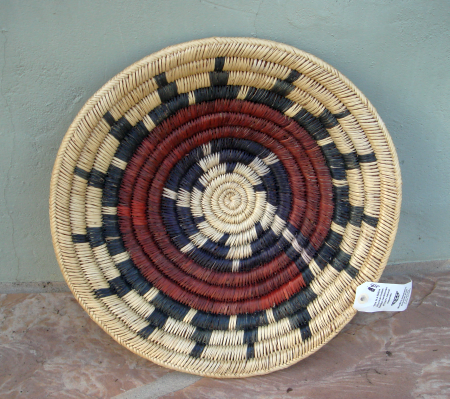
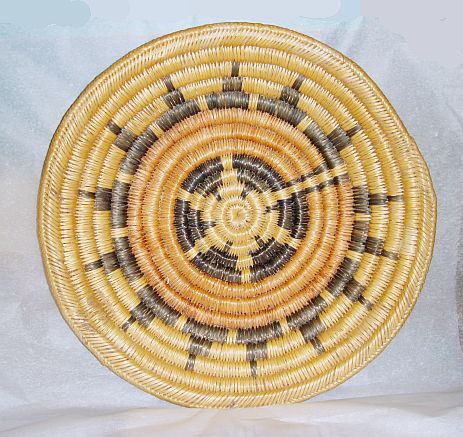
1.jpg)

